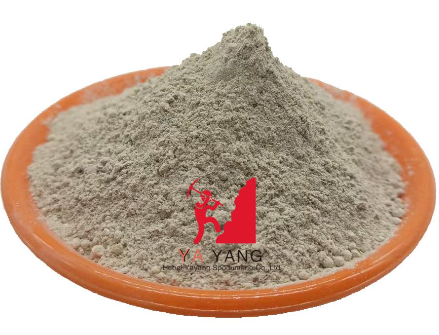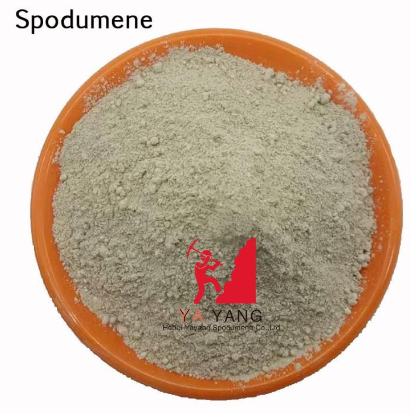Processing Spodumene by Froth Flotation for Lithium Extraction
Spodumene theoretically contains 8.03% Li2O and therefore the production of this mineral is greatly increasing because of the expanded use of lithium in the manufacture of high temperature insoluble lubricants, ceramics, pyrotechnics, non-ferrous welding fluxes, air purifying agents, and hydrogen isotopes.
Extracting Lithium from its Ore
The problems of spodumene mineral dressing depend on the amount of ore deposit, weathering and presence of associated gangue minerals. Weathered mineral surfaces must be thoroughly cleaned for selective flotation. Slimes interfere with selective flotation and also consume expensive reagents. Therefore, the slimes must be eliminated prior to conditioning and flotation. Concentrates should be about 6.00% Li2O.
The selective separation of gangue minerals requires acid-proof mining equipment, which is described more fully in Flowsheet Study on Feldspar.
The Lithium Ore Process
Fatty acid or soap flotation of spodumene is one well established recovery method, but pulverized or ground particle surface conditions generally necessitate pre-flotation treatment. This involves high density agitation with cleaning agents such as sodium silicofluoride, trisodium phosphate, or sodium sulphide with sodium hydroxide. The pulp is then deslimed.
Agitation with anionic collectors, followed by flotation, will often result in satisfactory spodumene concentration when the spodumene is to be floated. Oleic acids and soaps work well in neutral and slightly alkaline pulps, while naphthenic acids, sulphonated castor oil, etc., work best in an acid pulp.
The process involve the froth removal of gangue minerals in an alkaline circuit with an amine collector. The spodumene is depressed with dextrine and removed as a high grade concentrate. Since this method is selective for the separation of mica, feldspar, and quartz, it solves the problem of marketing all possible products. A Mineral Jig is included to recover a heavy mineral concentrate.
Crushing
Mine run ore is usually bulky to avoid fines and definitely requires a rail grizzly to limit the size of coarse ore fed to the jaw crusher. Two stage, open circuit crushing is satisfactory in the 200 ton per 8 hour production range. The resulting fine ore is smaller than ½" or ¾".
A stationary grizzly, set at approximately 1½" opening, removes undersize from the primary jaw crusher feed. A Vibrating Screen removes the undersize from the secondary crusher feed. Removal of undersize reduces the amount of resulting fines and increases the capacity of the equipment.
Grinding and Classification
The Steel Head Rod Mill has proven extremely satisfactory for grinding such pegmatitic mineral as feldspar and spodumene. The grinding circuit should have a controlled feed rate which is accomplished with a Adjustable Stroke or variable-speed Belt Feeder. Sufficient fine ore-bin storage should be available for at least one day capacity, and preferably more storage should be available.
The pre-flotation treatment generally begins at the rod-mill. A cleaning agent such as sodium silicofluoride, trisodium phosphate, or sodium sulphide with sodium hydroxide is added with the fine crushed ore to the rod mill and grinding is accomplished with a dilute pulp (25-35% solids). A Spiral Screen on the rod mill discharge eliminates tramp oversize from the grinding circuit, which is closed with a Vertical Centrifugal Sand Pump and Vibrating Screen. The vibrating screen is equipped with stainless steel screen cloth for 20 to 30 mesh separation.
The vibrating screen undersize (- 20 mesh range) is then deslimed in a Hydroclassifier and dewatered in a Rake Classifier after the pulp has been processed in a Mineral Jig. The jig removes a heavy mineral concentrate such as tin and columbium.
Conditioning
High density conditioning in the 70-75% solids range is very important to prepare mineral surfaces and assure proper reagent coating. Therefore, heavy duty Agitators are used. The duplex Agitator gives high concentration of horsepower and eliminates short circuiting.
The deslimed and washed pulp at (70-75% solids) is conditioned for about 5 minutes with a .5 lb./ton to approximately 1 lb./ton amounts each of the reagents as follows: a pH regulator such as lime; dextrine; amine acetate such as Armac T; and an alcohol frother. The pH is kept in the 10-11.5 range due to the unstable tendency of the amine collector above pH 11.5.
Reagent preparation involves little difficulty, as the liquid and dry reagents can be easily fed to conditioner with Reagent Feeders. However, the viscous amine reagents in bulk form generally require heat and agitation to provide a satisfactory liquid feed.
Lithium Ore (Spodumene) Flotation
The conditioned pulp is diluted to approximately 20% solids for flotation in “Sub-A" Flotation Machines of standard steel construction. The cell to cell type machine with spitzkasten and froth paddles is used as well as the open-flow type. The open-flow machine has some advantage in coarse sand handling characteristics, and sand gates are placed very near to the bottom of the machine to improve passage of the 20 mesh sand fraction. Conical impellers and hood wearing plates of molded rubber construction give satisfactory service for this coarse, abrasive job. However, molded rubber receded disc impellers and diffuser type wearing plates also give satisfactory results when operated at speed higher than the conical disc impellers.
Roughing and Cleaning
The froth product from initial rougher flotation represents gangue contaminants and is cleaned in additional flotation cells with more reagents to increase recovery of spodumene. No attempt is made in the rougher circuit to remove iron minerals.
Final Cleaning
The combined rougher and cleaner tailing, which is the spodumene product with iron mineral contaminants, is then washed in a rake classifier and thickened for conditioning at 70-75% solids. Reagents for the removal of iron minerals include a combination such as hydrofluoric acid for a pH of 5, sodium resinate and a frother.
The conditioned pulp is then diluted to a 20-25% solids for flotation. Complete removal of iron minerals along with some remaining feldspar is accomplished in a froth product which is small and is discarded.
Although not indicated on the flowsheet, the final cleaner gangue froth, which contains feldspar and mica, can be processed in an acid circuit for the recovery of mica first. Then hydrofluoric acid amine flotation is used to separate feldspar from quartz.
Filtering-Drying
The spodumene concentrate is discharged at the tailing discharge of the flotation machine and is ready for final processing. The spodumene pulp contains approximately 20% solids and must be dewatered before filtration to reduce the volume of filtrate. Dewatering to 20% moisture is accomplished in a Rake Type Classifier with little or no loss of solids in the water overflow.
The classifier sands are filtered best on a top feed or horizontal filter. Due to the fast settling, granular nature of the spodumene, conventional drum and disc filters are unsuitable. Filtration reduces the moisture content to less than 10% and the filter discharge is ready for drying.
Direct fired Standard Rotary Dryers satisfactorily remove the balance of the moisture. A Vibrating Screen removes any tramp material that finds its way into the flotation circuit, and the spodumene is then ready for shipment to market or chemical processing for recovery of lithium salts.
We are a spodumene supplier. If you are interested in our products, please contact us now!
Related:
Heavy and Light Calcium Carbonate




评论
发表评论